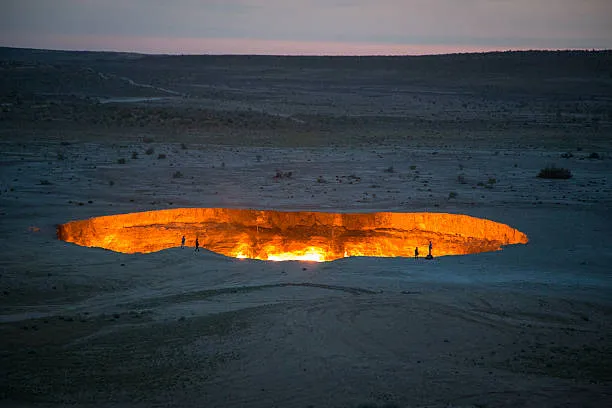Introduction
Imagine a blazing inferno in the middle of a desert—a fiery pit that has been burning for over 50 years. This is the Darvaza gas crater, more famously known as the ‘Gates of Hell.’ Located in the Karakum Desert of Turkmenistan, this natural gas crater has captivated the world with its eerie, otherworldly appearance. Recently, Turkmenistan’s government announced plans to finally close this infamous landmark, citing environmental and health concerns.
But what exactly is the Gates of Hell, and why is it so significant? Let’s take a deep dive into the history, formation, cultural importance, and future of this extraordinary site.
Table of contents
The Formation of the Gates of Hell
Origins of the Crater
The story of the Gates of Hell dates back to the early 1970s when Soviet geologists were exploring the Karakum Desert for natural gas deposits. During one such drilling expedition, the ground beneath their rig collapsed, creating a massive crater about 70 meters in diameter.
How the Fire Started
In an attempt to prevent the escape of toxic methane gas, the scientists decided to set the crater on fire, believing it would burn out within a few weeks. However, things didn’t go as planned. Decades later, the fire is still burning, fueled by the continuous seepage of natural gas from the earth.
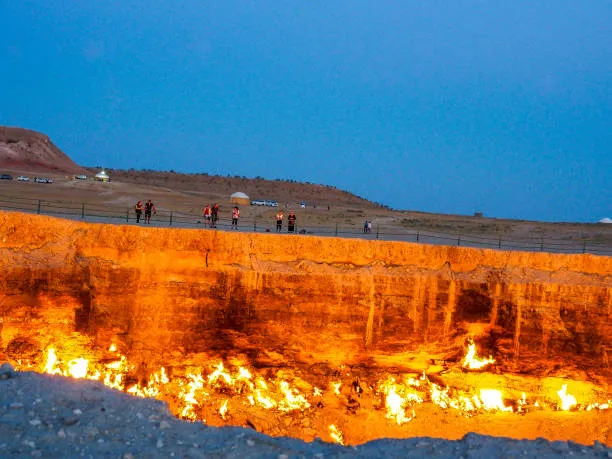
Scientific and Environmental Impact
Environmental Concerns
The Gates of Hell isn’t just a visual spectacle; it’s also a significant environmental concern. Methane, a potent greenhouse gas, is continuously released into the atmosphere, contributing to global warming. Closing the crater could help reduce Turkmenistan’s carbon footprint.
Scientific Studies Conducted
Over the years, scientists and researchers have studied the site extensively. From geologists analyzing the composition of the gas to chemists investigating the fire’s behavior, the crater has provided valuable insights into underground gas reserves and combustion processes.
Cultural and Tourism Significance
Symbol of Turkmenistan
For many Turkmen, the Gates of Hell is more than just a geological oddity; it’s a national symbol. It has appeared in numerous documentaries, travel shows, and even adventure vlogs, drawing attention to the country’s unique landscape.
Tourist Attraction
The blazing crater has become a major tourist destination, attracting thousands of visitors every year. The surreal experience of standing near the fiery pit has boosted local tourism and brought economic benefits to nearby communities.
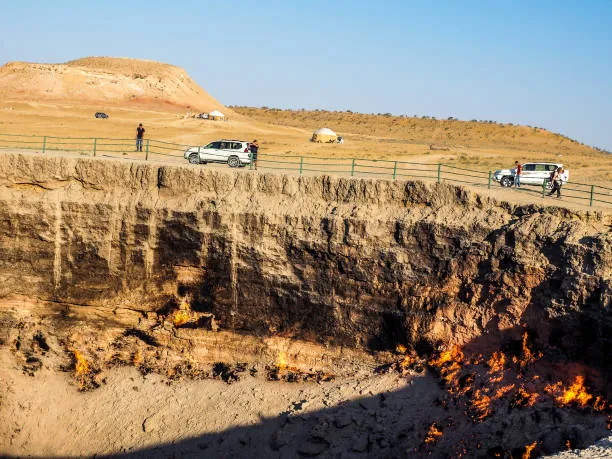
Government’s Decision to Close the Crater
Announcement by President
In early 2022, Turkmenistan’s president, Gurbanguly Berdimuhamedow, announced plans to extinguish the Gates of Hell. He cited environmental hazards, health concerns for nearby residents, and the need to use the gas for economic purposes as primary reasons for the decision.
Proposed Methods for Closing the Crater
Experts have proposed several methods for extinguishing the fire, including covering the crater or injecting substances to cut off the oxygen supply. However, these methods pose significant technical challenges due to the size and continuous gas flow.
Potential Benefits of Closing the Crater
Environmental Improvement
If the closure is successful, it could lead to a significant reduction in methane emissions, thereby improving local air quality and contributing to global environmental efforts.
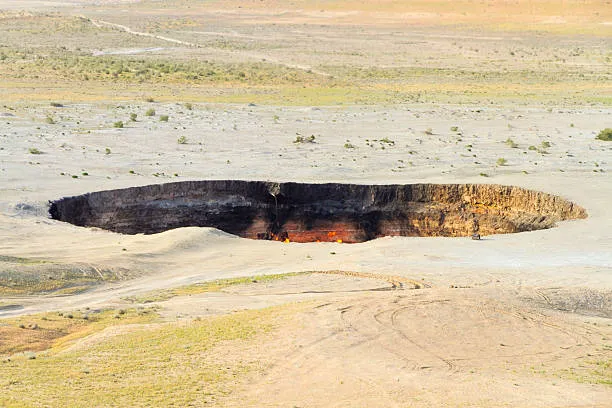
Economic Diversification
Shutting down the crater could open up new opportunities for Turkmenistan, such as developing alternative energy projects or promoting sustainable tourism in the region.
Opposition and Public Opinion
Concerns of Locals and Scientists
Not everyone is on board with the government’s decision. Some locals fear that closing the crater will hurt tourism, while certain scientists argue that the site still has scientific value.
Global Reactions
The news of the planned closure has garnered international attention. Environmentalists have welcomed the move, while travelers and adventurers have expressed disappointment at the potential loss of a unique destination.
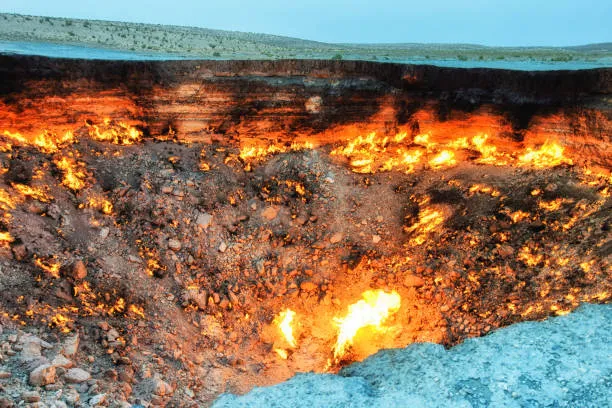
The Future of the Site
Possible Future Uses
There are discussions about converting the site into a tourist-friendly area, perhaps with a museum or educational center that explains its history and significance.
Preserving the Legacy
To ensure that the legacy of the Gates of Hell is not forgotten, authorities could establish memorials or initiate programs to educate future generations about the site’s geological and cultural importance.
Conclusion
The decision to close the Gates of Hell marks the end of an era for one of the world’s most intriguing natural phenomena. While it’s a bittersweet moment for adventurers and tourists, it’s also a step forward in addressing environmental concerns and exploring new economic opportunities. Whatever the future holds, the legacy of the fiery crater will undoubtedly live on in the memories of those who have witnessed its infernal beauty.
FAQs
- Why is the crater called the Gates of Hell?
The crater earned its nickname due to its fiery appearance and the continuous flames that resemble an entrance to the underworld. - How big is the Gates of Hell crater?
The crater is approximately 70 meters in diameter and 20 meters deep. - Can tourists still visit the site before it closes?
Yes, tourists can visit the site, but it’s advisable to check local guidelines and travel advisories. - What will happen to the site after the closure?
The government is considering converting the area into a tourist-friendly zone with potential museums or educational centers. - Is there any danger associated with visiting the crater?
While visiting the crater is generally safe, visitors should maintain a safe distance and follow local safety guidelines.
